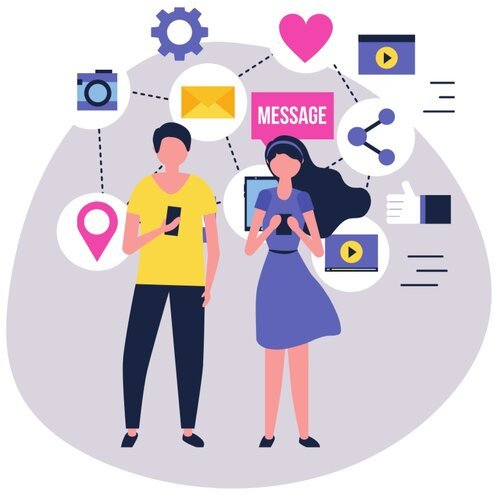If we were to ask people of different generations about the way they worked then and now, the statements could not be more different. The world of work has changed fundamentally.
People spend 80% of their time working together. Remote work and hybrid work have finally taken hold with Corona.
Traditional organizational models are reaching their limits in our fast-paced world, as are many employees struggling with data overload and continuous distraction.
Two questions get asked:
How can management establish an organization that is reliable and efficient, yet fast and agile to operate successfully in a fast-paced environment?
How do they ensure employee satisfaction and well-being in the process?
The immediate answer: Digital transformation. Technology.
Our answer: A new way of working.
Studies show a productivity increase potential of 20-25% through the use of collaboration tools. However, only those companies that adapt their way of working, encourage open communication and knowledge sharing, and bring a networked organization to life will be able to realize the potential.
7 GOLDEN RULES OF A MODERN WAY OF WORKING
Over the past 20 years, we have had the privilege of accompanying a number of companies on their journey towards a more modern way of working. The following 7 golden rules for a modern way of working have emerged:
Networked organization instead of rigid silos
Hybrid collaboration culture
Scalable collaboration standards
Reduction of redundant information
Open communication as default
(Pro-)active knowledge exchange
Increased autonomy of employees
FROM THE RULES TO ADOPTION
How do you create the right conditions for these rules to be applied? How do you get employees to want to comply with them?
We have developed our own Modern Work solution for this purpose.
It focuses on employees and their work scenarios. In dialog with them, we want to understand how they work today - as individual workers, in departments, in teams, on projects or in work groups. With our out-of-the-box modern workplace solution and best-practice configuration of Microsoft 365 technologies, we then demonstrate directly how their work steps and work processes can be digitized and made more efficient as individual workers or in collaboration with others. Most importantly, we let them personally experience how a more modern way of working can simplify everyday work. More independence. Faster knowledge retrieval. Easier communication. Users don't have to focus on the tools, it is about the new way of working.
ORGANIZATION-WIDE SCALING OF MODERN COLLABORATION
We store and configure the individual work scenarios as corporate standards and on the basis of best-practice templates in our Modern Work solution. This enables the organization-wide scaling of long-term orderly and structured collaboration with Microsoft 365, while ensuring the necessary governance and security in a networked organization.
We were recently awarded by Microsoft for our expertise on the topic of 'Adoption & Change Management'.
Would you like to better understand the potential of a modern way of working in your organization? Our experts are looking forward to an exchange with you.









































